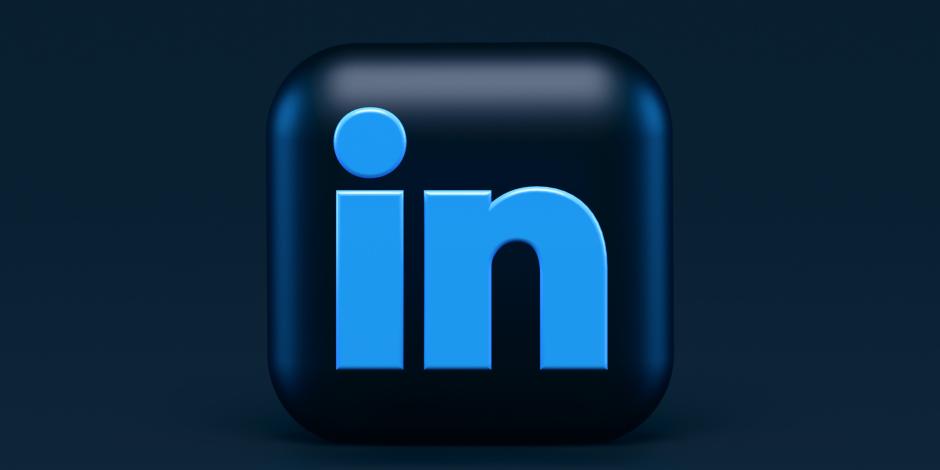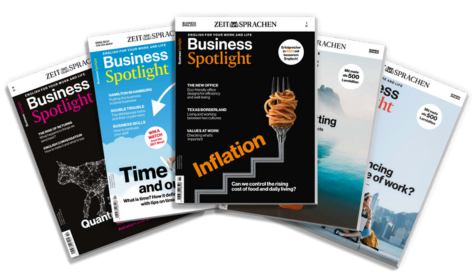The way we present ourselves online today is becoming more and more significant — also professionally. Whether we are looking for new employees or want to find new business contacts, our online presence can make all the difference.
This means it is all the more important to position ourselves correctly and build a personal brand(ing)Personenmarke; etwa: Eigenmarketingpersonal brand. As the largest professional network in the world, LinkedIn offers a huge opportunity for this. With just one click, you have the chance to share your skills and experience with around 900 million users and to draw on sth.auf etw. zurückgreifendraw on your interaction with them. It’s all about recognizing how you can make an impactfulwirkungsvollimpactful contribution based on your individual strengths, knowledge, network and personality.
at the end of the dayletztendlichAt the end of the day, people identify with people and thussomitthus build trust more quickly. It’s no different in a business context. No matter what your objectiveZiel(setzung)objective is, an approachableaufgeschlossen, zugänglichapproachable face creates an emotional bridge to your business, from which you can create a measurable returnhier: Renditereturn, especially in today’s world.
Over the past few years, my team and I have managed and built up more than 350 C-levelerste FührungsebeneC-level profiles on LinkedIn. From the insightErkenntnis(se)insights and learnings of these projects, we have developed a systematic approach: our C-Level Branding Five (CLB5) process. (Note: Of course, this approach works for any personal brand, regardless of whether you operate at C-level or not. The important thing is to follow the phases chronologically and to implement the aspects therein conscientiouslygewissenhaftconscientiously.)
Think of your LinkedIn profile as your new landing page
Phase 1: Set-up
The first step is to clean up your LinkedIn profile and to lay the foundationdie Grundlage(n) schaffenlay the foundation for your content strategy. To do this, analyse your industry environmenthier: Umfeldenvironment thoroughlygründlich, tiefgehendthoroughly to learn what your competitors, role models and “target groupZielgruppetarget group owners” (people who are already interacting with your target group) are doing online. You can learn valuable lessons from their successes and mistakes.
In this step, ask yourself what kind of brand you want to be, what topics and trends you and your industry are concerned with and how you want to talk about them. It’s important to think of your LinkedIn profile as your new landing page, where you need to find the right balance between business and personal story.
Phase 2: Content
The LinkedIn algorithm aims to keep users on the platform for as long as possible. The more engagementInteraktionengagement your content gets (meaning the longer users spend viewing your posts), the more it will be pushed and played out to your target audience. Therefore, content is the most important part of any profile. After you have determined, in the set-up phase, which topics you want to talk about and how often you want to inform, polarize or inspire, it’s time to find good and specific content ideas.
Every situation in your professional life (and beyond) can provide you with new material for your content on LinkedIn. AI (artificial intelligence)KI (künstliche Intelligenz)AI tools, like ChatGPT, can also offer you playful, creative impulses for new posts. It is important not to force anything. Stay true to yourself in terms ofim Hinblick aufin terms of language and content, and find a balance between text, photos and video posts.
If you to run out of sth.etw. nicht mehr haben, an etw. knapp werdenrun out of content at some point, you can always recycle. A post can be posted multiple times, from different angle(Blick-)Winkelangles, with different tagSchlagworttags. Time blockers in your calendar can help you develop a routine of regularly documenting your content ideas. Aim to publish at least one post per week. Otherwise, a lack continuity means you run the risk of losing the reachReichweitereach you’ve worked so hard to build up.
It’s about building long-term trust and sustainable business relationships
Phase 3: Reach
Reach on LinkedIn is often misunderstood. It’s not about generating leadsKontakt mit Interessentenleads quickly, but about building long-term trust and sustainableandauernd, langlebigsustainable business relationships. This primarily involves account routines that to ensure sth.etw. sicherstellenensure regular interaction with your target audience. This includes checking your inboxPosteinganginbox, processing every inboundeingehendinbound contact request, actively writing to profile visitors who might be relevant to you and your company, and to tackle sb.jmdn. angreifen; hier: sich mit jmdm. auseinandersetzentackling content engagers — this means filtering all likes, comments or shares for valuable contacts.
Phase 4: Media and PR
Wherever your target group’s attention is, that’s where you should be. In order to increase your expert status, it is to be worthwhilesich lohnenworthwhile supporting your digital reputation through classic media appearances, such as in newspapers, online portals and podcasts. A broad media presence not only serves to increase your reach, but also creates additional trust among your target group.
To reach the right media, you should analyse which media are used by other opinion leaders in your sector and determine through which channels your target audience consumes this content. Then, you know who to target. LinkedIn makes it easy for you to connect directly with journalists, reporters, etc., and to build a bondeine Beziehung aufbauenbuild a bond that can lead to media placement.
Phase 5: Evaluation and improvement
You generate a lot of data with your activity on LinkedIn. This is very valuable in to (re)align sth.etw. (neu) ausrichten(re)aligning your online presence. Take the time to review and analyse the data regularly. For example, LinkedIn’s own analysis tool offers you a good overview. It shows you the number of visitors to your profile, their titles and action areas (cities/countries), as well as your engagement metrics (likes, comments, reach, shares).
During this evaluation process, keep asking yourself: are the right people seeing my content? Which topics to resonate with sb.bei jmdm. Anklang findenresonate with my target group in terms of content? Am I still to pursue sth.etw. verfolgenpursuing the same goal as when I started my presence or has the focus in the company changed? What KPI (key performance indicator)(Leistungs-)KennzahlKPIs do I need to formulate for this?
Let’s go — don’t waste time!
Even though LinkedIn is the most important driver of today’s business world, the platform has by no means to exhaust sth.etw. ausschöpfenexhausted its potential. Few users continuously post good content, which means that many nicheNischeniche topics are still unoccupied. Those who to dedicate oneself to sth.sich etw. widmendedicate themselves now to the structured and sustainable development of their personal brand can relatively easily build up a large reach or effective visibilitySichtbarkeitvisibility and generate a measurable return for their own company.
Those who follow our CLB5 process can expect tangiblegreifbartangible results in just a few months. One thing is clear: your competitors will not sleep. Either you will be one of the visionaries and to get ahead of the gamesich der Konkurrenz gegenüber einen Vorteil verschaffenget ahead of the game, or you will be left behind and to resent sth.sich über etw. ärgernresent the fact that you let the competition get ahead of you. Which do you choose?
Keep the following goals in mind:
- Competence creates trust. Your goal is to become an opinion leader in your field.
- Dare to polarize. This gets people’s attention.
- Your target group should associate your core topicKernthematikcore topic with you.
- Continuity is crucialwesentlich, entscheidendcrucial. Always make sure you have enough content so you can post regularly.
For your content creation:
- Express yourself in short paragraphs.
- Use only relevant hashtags — and no more than three per post.
- Post external links only in the comments section.
For your posting routine:
- Avoid posting more than once a day.
- Be online 15 minutes before publication and interact with your network.
- Reply to all comments and ask counter-questionGegenfragecounter-questions.
- Publish your posts between 9 a.m. and 5 p.m.
- Take into to take sth. into accountetw. beachtenaccount the time zone of your target audience.
What to avoid:
- Posting “salesy (ifml.)hier etwa: auf den Verkauf fixiertsalesy” content.
- Sharing content that belongs on other social networks (such as cat photos).
- Sharing hate posts that to offend sb.jmds. Gefühle verletzen, jmdn. beleidigenoffend other people.
- Tagging more than five people in your post.
Author THOMAS RECK is one of the founders and CEO (chief executive officer)Geschäftsführer(in)CEO of Insight Consulting in Berlin. With his team at Insight, he helps C-levelerste FührungsebeneC-level executives stand out on LinkedIn to attract talent, strengthen their employer brand and increase sales via the platform
Neugierig auf mehr?
Dann nutzen Sie die Möglichkeit und stellen Sie sich Ihr optimales Abo ganz nach Ihren Wünschen zusammen.



